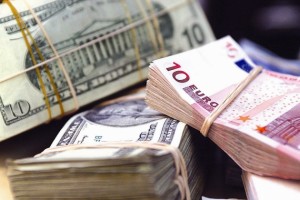 ASTANA – The official rate of the Kazakh tenge (KZT) fell to 185 per U.S. dollar with a range of three tenge on either side on Feb. 11. The devaluation was announced by Kazakhstan’s National Bank on the same day.
ASTANA – The official rate of the Kazakh tenge (KZT) fell to 185 per U.S. dollar with a range of three tenge on either side on Feb. 11. The devaluation was announced by Kazakhstan’s National Bank on the same day.
The National Bank decided to stop supporting the exchange rate at the previous level of 155.56 per dollar as of Feb. 10 in order to decrease currency interventions on the market and stop interference with the formation of the tenge exchange rate.
According to Chairman of the National Bank Kairat Kelimbetov, the bank will now take measures to maintain the national currency at about 185 tenge per dollar.
“We will continue to level the sharp surges. The National Bank is well positioned to defend the new equilibrium rate,” Kelimbetov said.
Kelimbetov said he sees no connection between this devaluation and the one held in Kazakhstan in February 2009.
He also stressed that the National Bank and the government will aim to ensure that this year’s inflation rate fluctuates between 6-8 percent.
According to the Almaty-based National Bank, the country’s economy is closely integrated into the global economy and therefore must take into account changes in global financial and commodities markets. Currently, as a result of quantitative easing in the U.S., capital is flowing from developing markets to developed ones, leading to increased pressure on the currencies of those countries. Amid uncertainty over the further development of the world economy, volatility on global financial and commodity markets has increased.
Another reason the bank gives for the devaluation is the lingering instability of the Russian rouble. In 2013, the Russian national currency fell 7.1 percent against the dollar, with the downward trend persisting into January and February 2014.
Another contributing factor is the state of Kazakhstan’s balance of payment. Despite the current account surplus, there has been an increase in imports, including imports of consumer goods.
To further cut inflation rates to 3-4 percent, the National Bank plans to shift to inflation targeting instead of tight regulation of the tenge exchange rate.
In the longer run, the tenge exchange rate will be defined by macroeconomic factors.
At a press conference in Almaty on Feb. 11, Kelimbetov provided these reasons and gave additional comments on the new developments.
“The National Bank has all the capabilities to maintain the equally balanced exchange rate at 185 tenge [per dollar],” he added. “Recently, we published the Republic of Kazakhstan’s balance of payments for 2013, we have conducted analytical work which highlighted several important factor to which the National Bank paid attention.”
“All these changes are made in the context of improving the competitiveness of the tenge exchange rate and of Kazakhstan’s producers. It is important to manufactures of the agricultural sector, light and manufacturing industries. We believe this will allow our producers, both within the Customs Union and outside it in the general cooperation to strengthen their positions,” Kelimbetov stressed.


